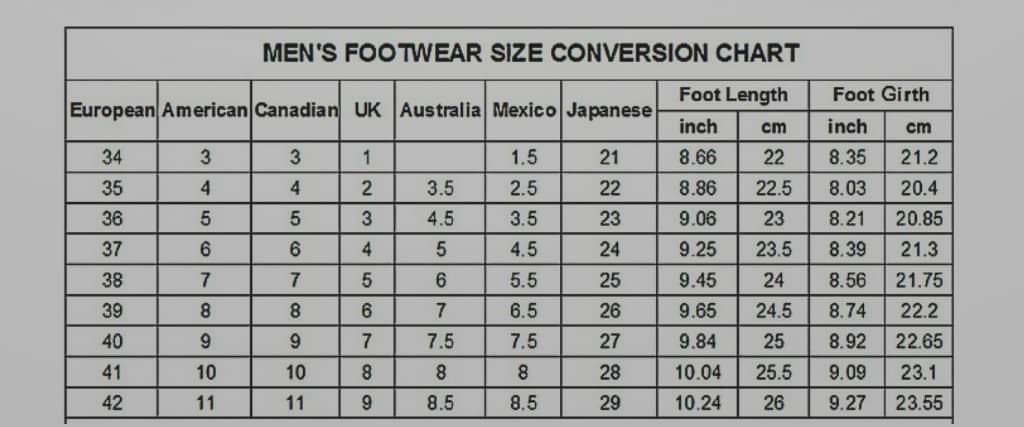We’ve all been on vacation, gone out to the shopping district, and seen something we like the look of. A souvenir is easily obtainable; but when it comes to wearables, it all becomes a bit of an ordeal. Finding the right size can be an arduous affair especially when it comes to shoes. While some online retailers do the hard work and convert it for you; some don’t. Which can be a royal pain when ordering some unique kicks from overseas.
Check out our handy shoe size calculator and size guide below to make sure you get the best fit for your Aussie feet!

Without boring you to tears, the cause behind this issue is that there’s no global standard unit of measurement for sizing feet and/or shoes. The UK, Ireland, and India use an inch-based system called ‘barleycorn’. The US and Canada use an almost identical system but for some reason always add a number on, inferiority complex maybe? Most of us will have sizes in the single digits but bigger chaps might have 12s, 13s, etc.
In mainland Europe and the Middle East, they tend to use ‘Paris Points’ which tend to ascend into the 30s and 40s. Over in Japan, they take a methodical approach using centimeters.
That said, it varies by retailer. If you’re in a shoe store within a major tourist destination city; then they’ll probably stock shoes with various sizes on the label. Major brands like Nike and Adidas tend to supply all the information on their shoe’s tongue underside.
It might be an idea to save the above image to your phone when you’re travelling; should you come across a pair of shoes you like. The reason we have this slight issue is that no nation truly wanted to abandon its methods. The International Organisation for Standardisation was formed long after cobblers made shoes around the world.

The IOfS tried to introduce ‘mondopoints’ as a valid method to give a worldwide recognised system to measure shoes. In theory, it’s a cracking idea as this actually takes into account the user’s foot width; so always tends to be a perfect bespoke fit.
Yet the variability of overall shoe size and shape creates a logistical nightmare for everyone involved. Does the manufacturer really want to make another 100 versions of a size 9 based on width? Does the retailer want to stock more shoes? How annoying would it be for the customer to continually try on shoe after shoe due to these new sizes? It’s just not worth the time or effort. Some militaries do however adopt this system as soldiers going into battle probably need the best fit possible.
Due to the popularity of American brands and how frequently UK/EU citizens travel these sizes have become somewhat standardised as most are printed alongside the local size somewhere in the shoe. That’s good for us Aussies, as our historical British influence lends itself to shoe sizes as they’re identical. We can just look for the UK size and go on that.
General FAQs

Are the US and AUS shoe sizes the same?
Typically not; but not far off. We’re using the same system as the UK, so the digit tends to vary by one. Usually, if you want a size 9 UK, you’ll need a size 10 US.
Is the UK shoe size the same as AUS?

Indeed they are! It’s always worth trying them on; but more often than not a shoe, you find in Australia will be made to the same sizing system as the UK.
Is New Zealand’s shoe size the same as AUS?
Yes, New Zealand uses the same UK system as us in Australia. Again, always worth trying before you part with your hard-earned cash.
